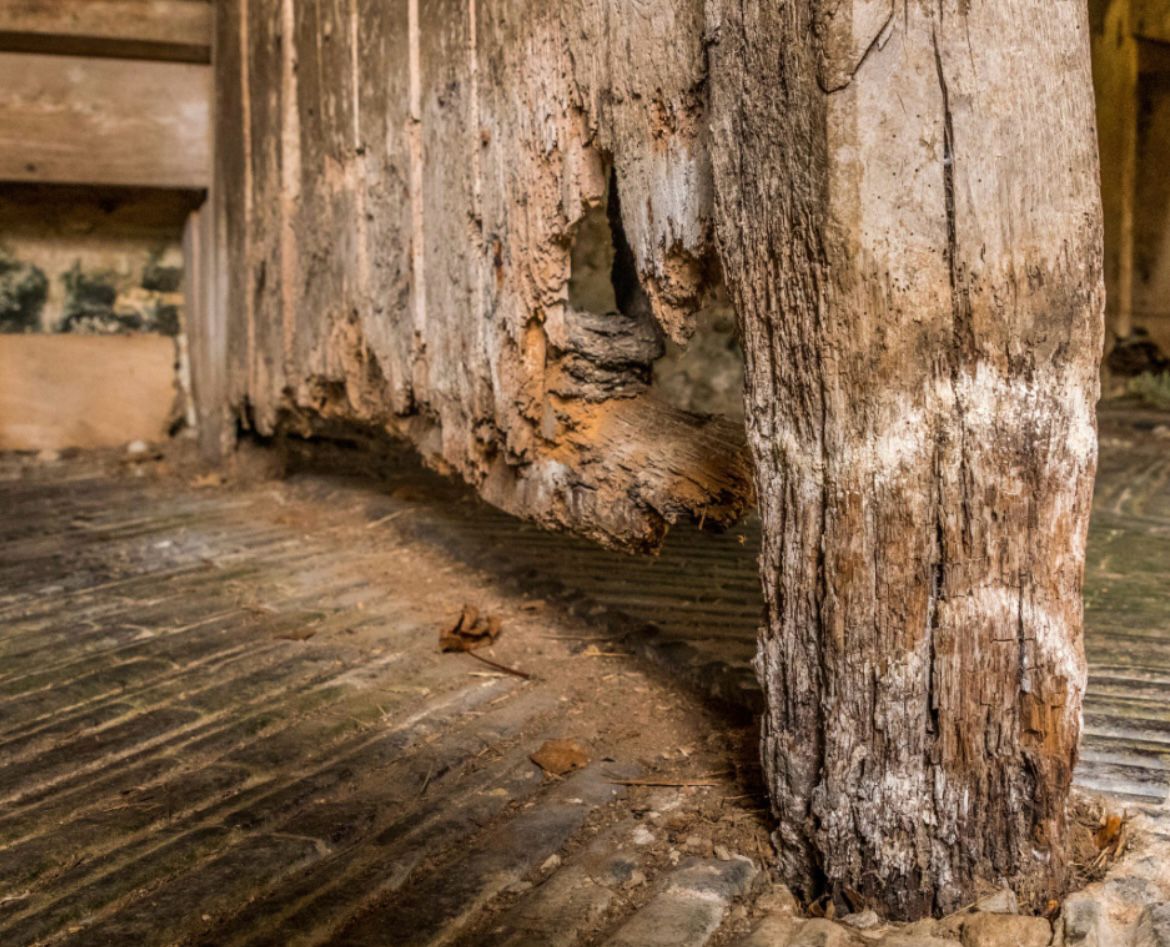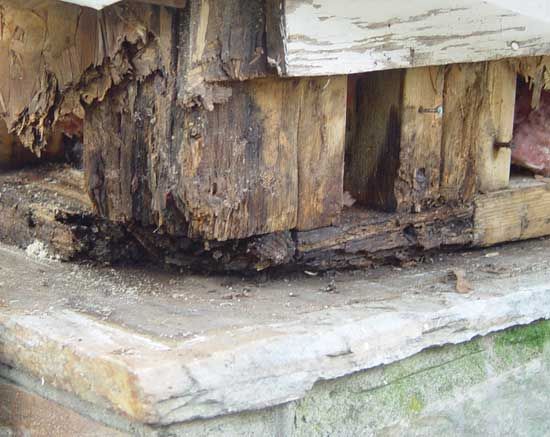Wet & Dry Rot Services
____
Kennedy Damp Proofing provide a comprehensive range of timber treatment solutions and wet and dry rot services for both domestic and commercial properties.
Kennedy Damp Proofing delivers a complete range of timber treatment solutions and wet and dry rot services for residential and commercial properties. We are experienced specialists in timber preservation; our services include dry rot treatment, wet rot repair, timber surveys, wood preservation and fungal decay remediation for all types of structural timber.
What's The Difference Between Wet & Dry Rot?
_____
Treating wet rot is typically more cost-effective than eliminating dry rot. Wet rot contains higher moisture levels compared to dry rot, though both types of fungal timber decay can develop when wood remains in contact with damp conditions for extended periods, particularly in areas with poor airflow like under-floor spaces.
What Is Wet Rot?
_____
Wet rot is a general term covering various fungal species that can damage your property. Wet rot requires high moisture levels to develop and primarily attacks timber. Multiple types of wet rot fungi exist, while only one species of dry rot fungus occurs. This makes it crucial to identify whether your home has rot – and determine if it's wet or dry – at the earliest opportunity. Wet rot typically affects more confined areas and can be resolved faster and more affordably. Without treatment it can lead to serious structural problems, so prompt wet rot treatment is always essential.
Wet Rot Treatment
_____
Usually, wet rot develops in the wettest sections of the building. We work to identify the rot's source and stop the moisture problem to eradicate it for good, while replacing compromised timber areas.

What is Dry Rot?
_____
Dry rot fungi can manifest as white threads, sheet mycelium and fruiting bodies. These white threads can penetrate brickwork and mortar gaps, carrying moisture to dry, poorly aired spaces and enabling fungal spread. The mycelium forms silky white sheets, frequently with yellow/lilac borders. Fruiting bodies develop as fleshy, pancake-shaped formations filled with spores, often producing red dust around infected areas.
Dry Rot Treatment
_____
Effective dry rot treatment implementation typically involves several essential elements. The initial step for proper and precise dry rot treatment is eliminating moisture source(s) and creating a dry environment. Dry rot treatment then requires destroying fungal growth and replacing damaged timber components.
Dry rot treatment (Serpula lacrymans) usually involves removing and disposing of deteriorated timbers plus chemical treatment of surrounding areas to eliminate fungal growth. When masonry is infected, brickwork treatment may be necessary through sterilisation and/or irrigation of the walls.
Irrigation describes the process of eradicating dry rot from masonry by drilling the stonework and injecting fungicidal preservative into walls under pressure. Kennedy fungicidal biocide is applied to sterilise masonry surfaces and the oversite.
After eliminating the fungus and removing moisture sources during dry rot treatment, new timbers can be installed, ensuring separation from masonry using physical barriers and sufficient ventilation to floor cavities. Where floor cavities cannot be properly ventilated, concrete replacement may be necessary.

The Cost Of Wet Rot & Dry Rot Treatment
_____
Wet rot treatment is typically more affordable to eliminate than dry rot, since removing fungal growth is much easier and doesn't usually need chemical treatment. Eliminating moisture sources, creating dry conditions and timber replacement will still be necessary. Kennedy Damp Proofing's range of treatments for fungal decay may include specialist removal works, partial or full floor replacements and re-plastering.
If you have any queries about timber rot treatment – whether wet rot treatment or dry rot treatment – please don't hesitate to contact Kennedy. As with any potential serious housing issues that could significantly affect your property's structure, it's advisable to have a professional evaluate the situation immediately.
Our Customers Rate Us..
Why Choose Kennedy
20+
Years In Business
200+
Happy Clients
150+
Projects Completed
30+
Year Guarantee
Get In Touch With Us
Get Expert Damp Proofing, Book Your Free Survey Today
Whether you're worried about rising damp, mould patches, condensation, or timber decay, Kennedy Damp Proofing is here to help. We offer free damp surveys across Brighton, Hove, Shoreham, and Sussex, with fast response times and 30-year guaranteed treatments. Our certified team will inspect your property, explain the issue in plain English, and provide a clear, no-obligation quote, so you can take action with confidence.
________
Phone - 01273 110107
Email - [email protected]
Free Consultation
Get A Free Quote
Areas We Cover
If your area is within an hour of Hassocks, give us a call as we can still cover your location, and where possible we will accommodate.
Frequently Asked Questions
Before calling, here are some questions people often ask us which may answer your query.
What do damp proofers do?
Damp specialists examine properties to detect moisture issues, locate the root cause, and implement targeted solutions such as chemical damp proof course injection, protective membrane installation, improved ventilation systems, or waterproof tanking to eliminate dampness and stop future moisture penetration.
What are the first signs of damp in a house?
Early signs of damp include black mould near skirting boards, musty smells, peeling wallpaper, salt staining, or cold patches on walls, even when the heating is on.
Is damp proofing covered by a guarantee?
Yes. At Kennedy Damp Proofing, all our treatments come with a 25-year guarantee, covering both materials and installation when carried out by us.
What is the best damp proofing method?
The best method depends on the cause. For rising damp, DPC injection or membrane damp proof courses are common. For basements, BS 8102-compliant tanking systems like Triton TT55 are ideal. A proper survey ensures the right solution is used.
Is damp proofing worth it?
Yes. Damp proofing protects your property's structure, prevents health risks from mould, improves energy efficiency, and maintains resale value. It’s a long-term investment in your home.
How do you know if you need damp proofing?
If you see mould, peeling paint, musty smells, damp patches, or warped timber, especially on lower walls or near windows, it’s time for a professional damp survey.
What are the side effects of damp proofing?
When done professionally, side effects are minimal. Poorly installed systems may trap moisture or cause further issues. That’s why we only use certified methods and breathable materials to ensure safe, lasting results.
Which areas do you cover?
We are based in Hassocks, but cover all of Sussex, and all along the South of England. If you are in a town/village nearby, please contact us and we can visit for a quick survey.
Can damp cause health issues?
Yes. Untreated damp and mould can worsen respiratory issues, trigger allergies, and affect indoor air quality, especially in poorly ventilated areas.
How long does damp proofing take?
Most damp proofing jobs take 1–5 days depending on the severity and area size. We provide a clear timeframe after your free survey.
Will I need to leave my home during treatment?
In most cases, no. Our technicians work cleanly and efficiently to minimise disruption, keeping your home safe and liveable throughout the process.
What are the advantages of damp proofing?
Damp proofing protects your health by eliminating harmful mould, preserves your property's structure and value, reduces heating costs, creates a more comfortable living environment, and provides long-term peace of mind with professional guarantees.
What are the requirements for damp proofing?
Successful damp proofing needs thorough assessment using specialist equipment, careful preparation of affected areas, application of appropriate treatments like DPC injection or membranes by experienced professionals, compliance with building regulations, and proper warranties on both materials and workmanship.
Can damp come back after damp proofing?
When carried out properly by qualified professionals using quality materials and methods, damp proofing should provide long-lasting protection, but poor workmanship, inadequate diagnosis, or new issues like roof leaks or broken gutters can allow moisture problems to return.
